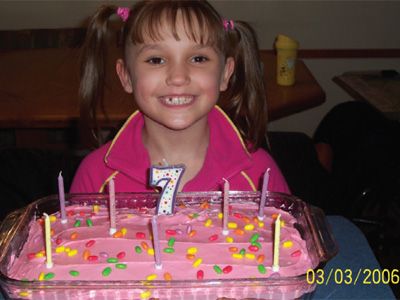
A couple of years ago on my personal blog, I wrote a scathing (even for me) piece against news editors who ignored the story of a seven-year-old girl who died a day after being physically restrained by employees at a Rice Lake, Wisconsin counseling center. News editors like me; I had ignored the story, too.
In late May 2006, Angellika Arndt was placed in a “control hold” after several infractions, such as gargling her milk, an initial state investigation showed. She died the next day at Children’s Hospital in Minneapolis and, for the most part, her case was — and continues to be — ignored.
Last week, the Wisconsin Protection & Advocacy Agency (Disability Rights Wisconsin), an independent agency, released its investigation and I won’t make the same mistake twice.
In its 75-page report to the state, called “A Tragic Result of a Failure to Act,” investigators chronicled the very definition of tragedy in such a short life. Angellika was only three when she was taken from her biological parents for physical and sexual abuse. She roamed the foster care system and by age five, she’d been diagnosed with a host of psychological problems. But she’d made progress with a new foster family and was sent to the Rice Lake facility to “help prepare her for first grade.”
Subsequent investigations showed the girl was placed in restraints for hitting her chin with her hand and in some cases — said to be routine — staff members held her face-down on the floor for an hour and a half. This was how children looking for help transitioning to first grade were treated in 2006. They still may be.
Here is the account of her final hours:
Angie arrived at RLDTC around lunch time, and a short time later found herself in a “cool down” precipitated by staff’s determination that she had not followed directions for talking and was gurgling her milk with her straw. When Angie couldn’t sit still in the chair for her time out, staff took her to the special cool down room. This was the special seclusion room that had no window or furniture besides the single “cool down” chair. The hard floor was covered with a thin carpet glued down to the concrete below. Staff reminded Angie that her cool down time didn’t begin until she sat still and in the proper position. Instead of obeying, Angie curled up in the chair, began to cry and soon appeared to fall asleep.
After about five minutes Angie awoke and began to swing her legs back and forth in the chair. Staff warned her that if she didn’t stop, they would have to place her in a control hold for safety. Undeterred, Angie continued to swing her legs and cry. Eventually, staff reported that Angie made an aggressive move as she sat in the cool down chair, so they took her down with a prone restraint. More staff were called to assist with the restraint.
One staff person placed his body across Angie’s small back and held her head face down on the floor. Three others held her arms and legs immobile. Angie was restrained in this position for over an hour until they felt she was calming down. In the RLDTC report written after her death, staff reported that Angie stayed on the floor making cooing noises after they freed her. Staff left her there for about five minutes, thinking she had fallen asleep. Only then, when Angie failed to respond to questions, did staff roll her over and discover that her lips were turning blue.
One staff member was sent to jail for 60 days. The facility was closed and just when you think this tragedy couldn’t be any more senseless comes the revelation that nowhere near enough has been done as a result of Angie’s death to prevent it from being repeated with another child.
The Wisconsin Department of Health Services formed a committee to create a plan for training and technical assistance. It still hasn’t finished its work. A memo on prohibited restraint practices has never been issued. And worst of all, “nothing has been done to review or revise the children’s day treatment regulations,” the report said.
After Angie’s death DHFS did cite the facility for numerous violations, leading to the facility’s closure. However, the Department has been slow to take action to decrease the use of seclusion and restraints in children’s programs and goals dealing with care planning, training, quality assurance, and monitoring have not been met. In November 2007 a number of mental health advocacy groups wrote the DHFS Secretary requesting an official DHFS memo to providers that would identify prohibited practices in the use of restraint with children, so that additional deaths such as Angie’s would not occur. That memo has not been issued.
Well more than a year later, nobody has provided a fit answer for why children are treated as Angie Arndt was.
Here’s a full copy of the report.
